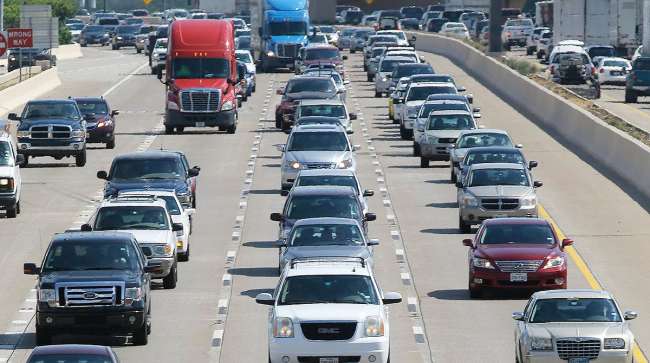Senior Reporter
Fatalities in Crashes Involving Large Trucks Increased by Just Under 1% From 2017 to 2018

[Stay on top of transportation news: Get TTNews in your inbox.]
Fatalities in crashes involving large trucks increased by just under 1% to 4,951 from 4,905, according to statistics released by the National Highway Traffic Safety Administration covering 2017 to 2018.
However, a downward trend is emerging this year; through the first half of 2019 the estimated number of fatalities is down 3.4%.
For last year, though, large-truck occupant fatalities rose to 885 in 2018 from 878 in 2017, a slight increase of 0.8% but the highest number since 1988, when the agency reported 911 occupant fatalities.
Just Released: 2.4% Decline in Traffic Deaths in 2018@NHTSA.gov’s FARS data shows highway fatalities decreased last year with 913 fewer deaths, down to 36,560. https://t.co/bm58ICfj3Q — NHTSA (@NHTSAgov) October 22, 2019
Overall, 36,560 people were killed in traffic crashes on U.S. roadways during 2018, a 2.4% decrease from 37,473 in 2017, which came after a 0.9% decrease from 2016 to 2017, said the NHTSA report, “2018 Fatal Motor Vehicle Crashes: Overview,” made public Oct. 22.
Of the overall decline, Transportation Secretary Elaine Chao said, “This is encouraging news, but still far too many perished or were injured, and nearly all crashes are preventable, so much more work remains to be done to make America’s roads safer for everyone.”
Fatalities decreased from 2017 to 2018 in almost all segments of the population, with the exception of fatalities in crashes involving large trucks and non-occupant fatalities (pedestrians and pedal cyclists).
American Trucking Associations said the numbers alone do not paint a complete picture of highway safety.
“These figures alone provide an incomplete picture of the safety of our highways because they do not account for how many vehicles were on the road in 2018 and how many miles those vehicles traveled, so we will wait to see that information before making wide-ranging pronouncements about this data,” said ATA spokesman Sean McNally.
The report said that overall vehicle miles traveled based on early traffic volume trends increased by 0.3% from 2017 to 2018. However, the fatality rate per 100 million VMT decreased to 1.13 in 2018 from 1.17 the year before (3.4%), the report said.
“Over the past 40 years there has been a general downward trend in traffic fatalities,” the report said. “Safety programs such as those increasing seat belt use and reducing impaired driving have substantially lowered the traffic fatalities. Vehicle improvements such as air bags and electronic stability control have also contributed greatly to the reduction of traffic deaths.”
The report also said that partnerships with states on highway safety issues support a range of activities that have saved lives over the years.
The report also showed:
• Pedestrians killed in crashes involving large trucks increased by 13%.
• Large-truck occupant fatalities in single-vehicle crashes increased to 535 from 525, a 1.9% increase from 2017.
• Large-truck occupant fatalities in multiple-vehicle crashes decreased to 350 from 353 (0.8%).
• Occupant fatalities in other vehicles decreased to 3,525 from 3,534 (0.3%).
• The number of alcohol-impaired drivers involved in fatal crashes decreased to 146 from 148 (1.4%).
In addition to the 2018 overall numbers, NHTSA also released initial estimates for the first half of 2019, which the agency said suggests that this overall positive trend may be continuing.
The estimated number of fatalities in the first half of 2019 declined by 3.4% from the same period in 2018, with 589 fewer fatalities over that time. NHTSA said that translates to an estimated first-half 2019 fatality rate of 1.06, the lowest first-half level since 2015. The estimates for the second quarter of 2019 represent the seventh consecutive year-over-year quarterly decline in overall fatalities, starting in the last quarter of 2017.
The National Safety Council said it is encouraged by the final data released by NHTSA.
We are encouraged by data released by @NHTSAgov
showing that, last year, motor vehicle deaths declined slightly for a second straight year. However, on a typical day we lose 100 people on our roadways. We remind everyone not to rest until we get to zero: https://t.co/6iYqYkc4nI pic.twitter.com/ndhPJpNXRm — NSC (@NSCsafety) October 23, 2019
“After a sustained period of rising fatalities, it is encouraging to see the uptick in deaths ebbing, possibly signaling an end to one of the worst increases since the 1950s,” the NSC said. “However, on a typical day we still lose 100 people on our roadways, and the data are especially troublesome when looking at increasing fatalities for pedestrians and bicyclists.”
“The new 2018 data shows that significant progress toward reducing crashes has slowed to a crawl,” Cathy Chase, president of Advocates for Highway and Auto Safety, said in a statement. “Fortunately, known solutions, including enacting state traffic safety laws and requiring effective safety technologies in all new vehicles, offer an immediate path toward curbing preventable crash deaths, injuries and costs.”
“While total traffic fatalities are down from last year, 36,560 deaths is still an unacceptable number,” Peter DeFazio (D-Ore.), chair of the House Committee on Transportation and Infrastructure, said in a statement. “Every life counts and we must continue to hold ourselves to the highest possible standards when it comes to making communities safer.”
Want more news? Listen to today's daily briefing:




